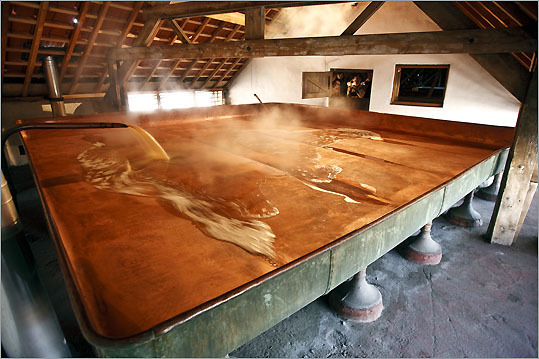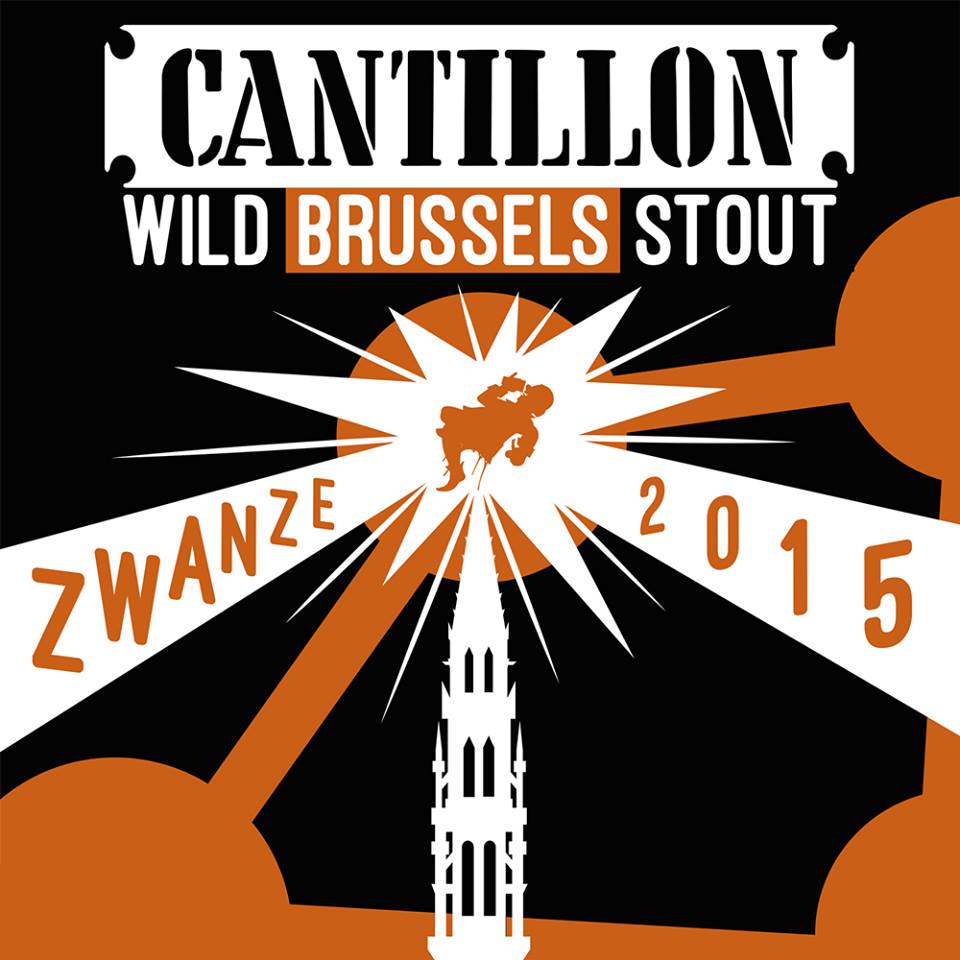You might get the impression that we, the beer gurus of ACB, understand all there is to know about beer, yet we’re still learning, just like anybody else. And it’s this thirst for knowledge that drives us to dig deeper into the stories behind the beers we drink, thus protecting you from the embarrassment of not knowing what exactly it is you’ve decided to pour in your mouth.
So welcome to the latest in our ongoing series (drum roll please…) “What the Hell Is a Lambic?”
The Basics:
Any discussion of the Lambic style has to start at its source, in the Zenne or Senne River Valley of Belgium also known as Pajottenland, where you’ll find the capital of Brussels and the cradle of Belgian sour styles. The etymology of the term Lambic is most likely derived from the town name of Lembeek, just down the road from Brussels, right on the border of the Flanders and Wallonia regions.
Historically, open fermented beers have been made in the region since at the least the days of the Roman Empire, though the various styles of Lambic, based upon specific ratios of malt and methods used, can be traced back to being identified as such since the 1400’s. If we had the space and time to delve into the history of the style, we’d be cutting into our next drinking session, but if you want to go deeper, here’s an excellent history of the style.
 The style is traditionally brewed with 60 to 70 percent barley malt, with the remainder being unmalted wheat. Brewers of the style do not use fresh hops, but mellower aged and dried hops which can provide a cheese-like flavor. Following brewing, the wort is left to cool, usually overnight in a koelschip which allows for the magical results that come from spontaneous fermentation. American brewed versions may simply be called sour or wild ales, but either term is a vague and varied nomenclature to assign a style as distinct (when done properly) as the traditional Lambic. Alcohol by volume varies from 2 to 8 percent, but most tend to land in the 5 – 7% range.
The style is traditionally brewed with 60 to 70 percent barley malt, with the remainder being unmalted wheat. Brewers of the style do not use fresh hops, but mellower aged and dried hops which can provide a cheese-like flavor. Following brewing, the wort is left to cool, usually overnight in a koelschip which allows for the magical results that come from spontaneous fermentation. American brewed versions may simply be called sour or wild ales, but either term is a vague and varied nomenclature to assign a style as distinct (when done properly) as the traditional Lambic. Alcohol by volume varies from 2 to 8 percent, but most tend to land in the 5 – 7% range.
There are roughly six varieties of the Lambic style:
Lambic (unblended): quite potent and sour initially, then more barnyard and funk as is it matures from jonge (young) to oude (old). Pale yellow to gold, the color darkens as it ages, has little to no carbonation and “dries out” with age.
Mars: like a small beer, it’s the result of brewing a second batch from a Lambic mash, used mainly for blending and rarely found as a production beer on it’s own.
Gueze: usually made by blending one, two and three year old Lambic. Moderately sour, more oak aroma from aging, more complex, naturally fruity aromas are common and generally more balanced overall.
Faro: a low-alcohol, blend of lambic and more freshly brewed beer with molasses, caramel or brown sugar added. Once a less expensive, light and sweet option for everyday drinking, the style has in recent years become more expensive and heavier in alcohol/mouthfeel.
Fruit: a Lambic with raspberry (framboise), peach (pêche), blackcurrant (cassis), grape (druif) and strawberry (aardbei), along with cherry (Kriek – see below) are the most common. Naturally occurring sugars and yeast in fruit provide secondary fermentation and examples tend to be more carbonated than standard Lambic.
Kriek: a Fruit Lambic fermented with cherries with secondary fermentation in the bottle. Traditionally dry and sour, this is one of the most common styles of Fruit Lambic, especially in America.
Lambics We Like that You Should Try:
 Brasserie Cantillon, Lou Pepe – Kriek (Anderlecht, Brussels) – Considered by many to be the best Lambic produced today, this 5% beauty is blended, contains 300 grams of fruit per liter and is aged in Bordeaux barrels. If you’re looking to explore the traditional Lambic styles, Cantillon along with Boon, Oud Beersel, 3 Fonteinen and Lindemans are all excellent places to start.
Brasserie Cantillon, Lou Pepe – Kriek (Anderlecht, Brussels) – Considered by many to be the best Lambic produced today, this 5% beauty is blended, contains 300 grams of fruit per liter and is aged in Bordeaux barrels. If you’re looking to explore the traditional Lambic styles, Cantillon along with Boon, Oud Beersel, 3 Fonteinen and Lindemans are all excellent places to start.
Allagash Brewing, Coolship Red (Portland, ME) – If you ever meet a Belgian visiting America and ask them which American brewery most closely replicates the traditional Lambic style, they’d likely say it’s Allagash as they’re considered the first – and thus most experienced in using a coolship to spontaneously ferment wild ales. Were it born in Belgium, this would be a framboise due to its inclusion of 100 pounds of raspberries per barrel.
Russian River Beatification (Santa Rosa, CA) – Released only when their blend of multiple 100% spontaneously fermented Sonambic batches has aged just right (in Oak Wine Barrels – of course), Beatification is one of the hardest to procure and thus, most sought after American Lambic styles made today.
Other American brewers who spontaneously ferment include Jester King, Crooked Stave, Trinity, de Garde, Blue Jacket, Anchorage, New Glarus, Side Project, Firestone Walker,Upland Brewing, Hill Farmstead, Block 15, Logsdon Farmhouse Ales, Oxbow, Peekskill, and more.
 Our Take:
Our Take:
Just two days after our fearless editor took on the snobbery that can infect the growing legions of American craft beer fans, we decided to take on a style that is considered by some in this country as the definition of beer snobbery. And that’s okay… we don’t judge, we just like good beer in whatever shape it takes or country it’s born in. The real irony here is that the Lambic style is one of the oldest existing and most basic ways to brew beer – without adding yeast or bacteria …or basically how all beer was brewed until yeast strains were harvested.
While attempting to get one’s hands on a Belgian Lambic can be an expensive endeavor (many bottles of Cantillon are priced in excess of $100), there is the annual Zwanze Day when most major cities have a simultaneous release party and pour glasses of various Cantillon taps and bottles, in addition to other Lambic brews. Then you have all the other brewers in America who’ve been slowly working on the style over the past 7 years, so we’re pretty stoked to have that many more options for us to indulge in when pursuing our increasingly more expensive obsession.
For more on the style, we highly recommend the lambic.info site for all things Lambic.
 American Craft Beer The Best Craft Beer, Breweries, Bars, Brewpubs, Beer Stores, And Restaurants Serving Serious Beer.
American Craft Beer The Best Craft Beer, Breweries, Bars, Brewpubs, Beer Stores, And Restaurants Serving Serious Beer.
